Opinion & Analysis
10 Players Who Will Rise (or Fall) in 2015

Before last season, I ran through the players that were projected to rise and decline in the 2013-2014 season. With the start of the 2014-2015 season coming this week, I wanted to go through the projections. The rankings in the tables below are based out of 177 players.
PLAYERS ON THE RISE
BILLY HURLEY III
One of the things I established a few years ago with my research was the idea of what I call The Four Cornerstones of the game. Recently, I altered the 4 cornerstones of the game just slightly:
- Driving Effectiveness
- Red Zone play (shots from 175-225 yards)
- Shots from 10-20 yards
- Make Percentage from 3-15 feet
Hurley achieved all of those 4 cornerstones of the game. Not only do the 4 cornerstones have a strong correlation to success on Tour, but they also have correlated strongly to getting a Tour victory, soon. Ben Curtis achieved the 4 cornerstones in 2011 despite only finishing 133rd on the Money List went on to win the next season at the Valero Texas Open. Matt Jones accomplished the 4 cornerstones in 2013 and finished 48th on the Money List and then went on to win at Houston this past season.
Hurley accomplished all of the 4 cornerstones last season and finished 91st on the Money List. He does not hit it that far and that may hold him back a little, along with having a below average Purse Size per Event played.
BRIAN STUARD
Stuard is much like Hurley in that he accomplished the 4 cornerstones last season and does not hit it far. However, he is a much better birdie maker (41st) than Hurley (157th), but has gotten off to slow starts in rounds 1 and 2. If he can improve his play in rounds 1 and 2, he is projected to have a great season.
TROY MERRITT
Merritt’s ball striking metrics were very impressive, but he struggled a bit from 10-20 yards and on putts outside 15 feet. The putting from outside 15 feet should progress toward the mean according to PGA Tour trends.
PAUL CASEY
Casey started to make a comeback after numerous injuries. He was actually an even better putter prior to his injuries than he is now, which is still pretty good. The big issue for Casey is his driving, but I could see him winning an event where the course is pretty wide open and receptive to very errant tee shots.
RUSSELL KNOX
The strength of Knox’s game in his short career has been his ballstriking and that allowed him to rank 28th in Adjusted Par-4 Scoring Average and 5th in Bogey Avoidance, which are the two key scoring metrics. He was also very good in rounds before the cut, ranking 40th in Adjusted Round 1 and 12th in Adjusted Round 2 Scoring Averages.
He now is now very good on Short Game shots from 10-to-20 yards. The only thing that is lagging behind is his putting. But, Knox is an AimPoint user and the trend with AimPoint users on Tour is that they typically see major improvements in their putting statistics after 3-to-12 months of using the green reading methodology.
Honorable Mention: Robert Garrigus, Brooks Koepka, Robert Streb, Jhonattan Vegas and Nick Watney
PLAYERS ON THE DECLINE
JONAS BLIXT
I picked Blixt last season and outside of a 2nd place finish at the Masters he did not record any other top-10 finishes. That will earn him a second invite to Augusta, but his exemption to Doral and Firestone will run out and I don’t believe he will be eligible for the Accenture Match Play.
His putting regressed a bit as I projected last year as he finished 33rd in Strokes Gained – Putting, but a large part of finishing even that well in Strokes Gained – Putting came from his ability to make putts from longer than 15 feet. The definitive trend on Tour is for a player that makes a lot of putts outside 15 feet to eventually regress toward the mean and that should affect his effectiveness on the greens. His short game also regressed this past season, but those are of secondary importance if he cannot improve his ball striking to a serviceable level.
RORY SABBATINI
Sabbatini’s strengths of his game over the years has been his Yellow Zone play and Short Game play. Strong players from the Yellow Zone tend to make more Birdies on the par-4’s, and the short game play typically cleans up any mistakes and can save par. That is how Sabbatini has been so successful over the years.
Scoring wise he ranked 151st in Adjusted Par-4 Scoring Average and 153rd in Bogey Rate which are two critical scoring metrics on Tour. While he is still better than average from the Yellow Zone and on shots from 10-to-20 yards, his performance in those categories has taken a noticeable dip as of late. He is also seeing a dip in his club head speed of about 2 mph. That may not sound like much, but on Tour the dip in club head speed does not have to be very much for it to have a strong trend toward a regression in the player’s performance.
MATT JONES
Last season I had Jones as my projected players to rise and he ended up winning at Houston. The best indicator of a player’s iron skill are shots from the fairway/tee box. Jones fell from 96th to 150th in 2014, so his iron play completely fell apart and his play from 10-to-20 yards regressed as well going from 19th in 2013 to 150th in 2013-2014.
If a player cannot find greens and cannot save pars when they miss greens, it’s a recipe for disaster. Furthermore, he gained a large portion of his strokes on the green from his putting outside 15 feet. That should regress towards the mean in 2014-2015, which means a regression in his total Strokes Gained – Putting metric.
Jones benefited from the favorable schedule last season where he was playing a much higher Purse Size per Event than Strength of Schedule. His Purse Size per Event should still be fairly high coming off the victory at Houston, but the strength of schedule should get more difficult as well and he will have a more difficult time making cuts if he continues to perform at the same rate.
BRENDON TODD
Todd had a fantastic season in 2013-2014. He was an adept putter of the ball that performed well from the Yellow Zone. Typically, good Yellow Zone performers make more birdies regardless of their putting skill. They are hitting the ball closer to the cup on the major of approach shots on the par-4’s and increasing their likelihood of making their putts. However, Todd was more of a grinder as he ranked 21st in Bogey Avoidance while ranking 70th in Birdie Rate. There is a downward trend in performance for players like Todd that fail to make a lot of birdies despite performing well from the Yellow Zone and with the putter.
We can also see Todd’s performance in 2013-2014 from the Red Zone and with the putter. The Red Zone performance declined over time while the Putter caught fire as the season progressed:
For the most part, Todd’s play from the Red Zone regressed significantly. The black slanted line is the ‘trend line’ which shows that Todd’s performance from the Red Zone was on a fairly steep decline. Meanwhile, his putting caught fire outside of the stretch of four events towards the end of his career. The past data of players that regress with their Red Zone play and catch fire with the putter is to regress significantly in the following season.
Todd will be exempt from every event this season outside of the Accenture Match Play. That will provide him a very favorable schedule where he is playing in large purse events and that should be enough for him to stay well within the top-125 on the Money List, but the trend shows that his Adjusted Scoring Average should get significantly worse and could lead to a lackluster season.
ERIK COMPTON
Normally, 80 percent of a Tour player’s earnings come from 20 percent of their events. Compton saw 87.4 percent of his earnings come from 20 percent of his events this past season. When the earnings percentage gets to 90 percent it indicates that the player did not play very well outside of one event which is what happened for Compton at Pinehurst.
The good news for Compton is that he did rank 90th in Adjusted Scoring Average, and he will continue to have a better than average Purse Size per Event as he is exempt from both the U.S. Open and the Masters. His struggles striking the ball and his drop in club head speed by about 2 mph, however, it is right in line with traditional regressions in performance on Tour.
Honorable Mention: K.J. Choi, Matt Every, Russell Henley, Charles Howell III and Scott Stallings
- LIKE3
- LEGIT0
- WOW0
- LOL0
- IDHT0
- FLOP0
- OB0
- SHANK0
19th Hole
Vincenzi’s 2024 Zurich Classic of New Orleans betting preview

The PGA TOUR heads to New Orleans to play the 2023 Zurich Classic of New Orleans. In a welcome change from the usual stroke play, the Zurich Classic is a team event. On Thursday and Saturday, the teams play best ball, and on Friday and Sunday the teams play alternate shot.
TPC Louisiana is a par 72 that measures 7,425 yards. The course features some short par 4s and plenty of water and bunkers, which makes for a lot of exciting risk/reward scenarios for competitors. Pete Dye designed the course in 2004 specifically for the Zurich Classic, although the event didn’t make its debut until 2007 because of Hurricane Katrina.
Coming off of the Masters and a signature event in consecutive weeks, the field this week is a step down, and understandably so. Many of the world’s top players will be using this time to rest after a busy stretch.
However, there are some interesting teams this season with some stars making surprise appearances in the team event. Some notable teams include Patrick Cantlay and Xander Schauffele, Rory McIlroy and Shane Lowry, Collin Morikawa and Kurt Kitayama, Will Zalatoris and Sahith Theegala as well as a few Canadian teams, Nick Taylor and Adam Hadwin and Taylor Pendrith and Corey Conners.
Past Winners at TPC Louisiana
- 2023: Riley/Hardy (-30)
- 2022: Cantlay/Schauffele (-29)
- 2021: Leishman/Smith (-20)
- 2019: Palmer/Rahm (-26)
- 2018: Horschel/Piercy (-22)
- 2017: Blixt/Smith (-27)
2024 Zurich Classic of New Orleans Picks
Tom Hoge/Maverick McNealy +2500 (DraftKings)
Tom Hoge is coming off of a solid T18 finish at the RBC Heritage and finished T13 at last year’s Zurich Classic alongside Harris English.
This season, Hoge is having one of his best years on Tour in terms of Strokes Gained: Approach. In his last 24 rounds, the only player to top him on the category is Scottie Scheffler. Hoge has been solid on Pete Dye designs, ranking 28th in the field over his past 36 rounds.
McNealy is also having a solid season. He’s finished T6 at the Waste Management Phoenix Open and T9 at the PLAYERS Championship. He recently started working with world renowned swing coach, Butch Harmon, and its seemingly paid dividends in 2024.
Keith Mitchell/Joel Dahmen +4000 (DraftKings)
Keith Mitchell is having a fantastic season, finishing in the top-20 of five of his past seven starts on Tour. Most recently, Mitchell finished T14 at the Valero Texas Open and gained a whopping 6.0 strokes off the tee. He finished 6th at last year’s Zurich Classic.
Joel Dahmen is having a resurgent year and has been dialed in with his irons. He also has a T11 finish at the PLAYERS Championship at TPC Sawgrass which is another Pete Dye track. With Mitchell’s length and Dahmen’s ability to put it close with his short irons, the Mitchell/Dahmen combination will be dangerous this week.
Taylor Moore/Matt NeSmith +6500 (DraftKings)
Taylor Moore has quickly developed into one of the more consistent players on Tour. He’s finished in the top-20 in three of his past four starts, including a very impressive showing at The Masters, finishing T20. He’s also finished T4 at this event in consecutive seasons alongside Matt NeSmith.
NeSmith isn’t having a great 2024, but has seemed to elevate his game in this format. He finished T26 at Pete Dye’s TPC Sawgrass, which gives the 30-year-old something to build off of. NeSmith is also a great putter on Bermudagrass, which could help elevate Moore’s ball striking prowess.
- LIKE8
- LEGIT3
- WOW1
- LOL1
- IDHT0
- FLOP3
- OB1
- SHANK2
19th Hole
Vincenzi’s 2024 LIV Adelaide betting preview: Cam Smith ready for big week down under

After having four of the top twelve players on the leaderboard at The Masters, LIV Golf is set for their fifth event of the season: LIV Adelaide.
For both LIV fans and golf fans in Australia, LIV Adelaide is one of the most anticipated events of the year. With 35,000 people expected to attend each day of the tournament, the Grange Golf Club will be crawling with fans who are passionate about the sport of golf. The 12th hole, better known as “the watering hole”, is sure to have the rowdiest of the fans cheering after a long day of drinking some Leishman Lager.
The Grange Golf Club is a par-72 that measures 6,946 yards. The course features minimal resistance, as golfers went extremely low last season. In 2023, Talor Gooch shot consecutive rounds of 62 on Thursday and Friday, giving himself a gigantic cushion heading into championship Sunday. Things got tight for a while, but in the end, the Oklahoma State product was able to hold off The Crushers’ Anirban Lahiri for a three-shot victory.
The Four Aces won the team competition with the Range Goats finishing second.
*All Images Courtesy of LIV Golf*
Past Winners at LIV Adelaide
- 2023: Talor Gooch (-19)
Stat Leaders Through LIV Miami
Green in Regulation
- Richard Bland
- Jon Rahm
- Paul Casey
Fairways Hit
- Abraham Ancer
- Graeme McDowell
- Henrik Stenson
Driving Distance
- Bryson DeChambeau
- Joaquin Niemann
- Dean Burmester
Putting
- Cameron Smith
- Louis Oosthuizen
- Matt Jones
2024 LIV Adelaide Picks
Cameron Smith +1400 (DraftKings)
When I pulled up the odds for LIV Adelaide, I was more than a little surprised to see multiple golfers listed ahead of Cameron Smith on the betting board. A few starts ago, Cam finished runner-up at LIV Hong Kong, which is a golf course that absolutely suits his eye. Augusta National in another course that Smith could roll out of bed and finish in the top-ten at, and he did so two weeks ago at The Masters, finishing T6.
At Augusta, he gained strokes on the field on approach, off the tee (slightly), and of course, around the green and putting. Smith able to get in the mix at a major championship despite coming into the week feeling under the weather tells me that his game is once again rounding into form.
The Grange Golf Club is another course that undoubtedly suits the Australian. Smith is obviously incredibly comfortable playing in front of the Aussie faithful and has won three Australian PGA Championship’s. The course is very short and will allow Smith to play conservative off the tee, mitigating his most glaring weakness. With birdies available all over the golf course, there’s a chance the event turns into a putting contest, and there’s no one on the planet I’d rather have in one of those than Cam Smith.

Louis Oosthuizen +2200 (DraftKings)
Louis Oosthuizen has simply been one of the best players on LIV in the 2024 seas0n. The South African has finished in the top-10 on the LIV leaderboard in three of his five starts, with his best coming in Jeddah, where he finished T2. Perhaps more impressively, Oosthuizen finished T7 at LIV Miami, which took place at Doral’s “Blue Monster”, an absolutely massive golf course. Given that Louis is on the shorter side in terms of distance off the tee, his ability to play well in Miami shows how dialed he is with the irons this season.
In addition to the LIV finishes, Oosthuizen won back-to-back starts on the DP World Tour in December at the Alfred Dunhill Championship and the Mauritus Open. He also finished runner-up at the end of February in the International Series Oman. The 41-year-old has been one of the most consistent performers of 2024, regardless of tour.
For the season, Louis ranks 4th on LIV in birdies made, T9 in fairways hit and first in putting. He ranks 32nd in driving distance, but that won’t be an issue at this short course. Last season, he finished T11 at the event, but was in decent position going into the final round but fell back after shooting 70 while the rest of the field went low. This season, Oosthuizen comes into the event in peak form, and the course should be a perfect fit for his smooth swing and hot putter this week.

- LIKE13
- LEGIT3
- WOW1
- LOL1
- IDHT0
- FLOP1
- OB1
- SHANK1
Opinion & Analysis
The Wedge Guy: What really makes a wedge work? Part 1

Of all the clubs in our bags, wedges are almost always the simplest in construction and, therefore, the easiest to analyze what might make one work differently from another if you know what to look for.
Wedges are a lot less mysterious than drivers, of course, as the major brands are working with a lot of “pixie dust” inside these modern marvels. That’s carrying over more to irons now, with so many new models featuring internal multi-material technologies, and almost all of them having a “badge” or insert in the back to allow more complex graphics while hiding the actual distribution of mass.
But when it comes to wedges, most on the market today are still single pieces of molded steel, either cast or forged into that shape. So, if you look closely at where the mass is distributed, it’s pretty clear how that wedge is going to perform.
To start, because of their wider soles, the majority of the mass of almost any wedge is along the bottom third of the clubhead. So, the best wedge shots are always those hit between the 2nd and 5th grooves so that more mass is directly behind that impact. Elite tour professionals practice incessantly to learn to do that consistently, wearing out a spot about the size of a penny right there. If impact moves higher than that, the face is dramatically thinner, so smash factor is compromised significantly, which reduces the overall distance the ball will fly.
Every one of us, tour players included, knows that maddening shot that we feel a bit high on the face and it doesn’t go anywhere, it’s not your fault.
If your wedges show a wear pattern the size of a silver dollar, and centered above the 3rd or 4th groove, you are not getting anywhere near the same performance from shot to shot. Robot testing proves impact even two to three grooves higher in the face can cause distance loss of up to 35 to 55 feet with modern ‘tour design’ wedges.
In addition, as impact moves above the center of mass, the golf club principle of gear effect causes the ball to fly higher with less spin. Think of modern drivers for a minute. The “holy grail” of driving is high launch and low spin, and the driver engineers are pulling out all stops to get the mass as low in the clubhead as possible to optimize this combination.
Where is all the mass in your wedges? Low. So, disregarding the higher lofts, wedges “want” to launch the ball high with low spin – exactly the opposite of what good wedge play requires penetrating ball flight with high spin.
While almost all major brand wedges have begun putting a tiny bit more thickness in the top portion of the clubhead, conventional and modern ‘tour design’ wedges perform pretty much like they always have. Elite players learn to hit those crisp, spinny penetrating wedge shots by spending lots of practice time learning to consistently make contact low in the face.
So, what about grooves and face texture?
Grooves on any club can only do so much, and no one has any material advantage here. The USGA tightly defines what we manufacturers can do with grooves and face texture, and modern manufacturing techniques allow all of us to push those limits ever closer. And we all do. End of story.
Then there’s the topic of bounce and grinds, the most complex and confusing part of the wedge formula. Many top brands offer a complex array of sole configurations, all of them admittedly specialized to a particular kind of lie or turf conditions, and/or a particular divot pattern.
But if you don’t play the same turf all the time, and make the same size divot on every swing, how would you ever figure this out?
The only way is to take any wedge you are considering and play it a few rounds, hitting all the shots you face and observing the results. There’s simply no other way.
So, hopefully this will inspire a lively conversation in our comments section, and I’ll chime in to answer any questions you might have.
And next week, I’ll dive into the rest of the wedge formula. Yes, shafts, grips and specifications are essential, too.
- LIKE35
- LEGIT7
- WOW1
- LOL1
- IDHT2
- FLOP3
- OB1
- SHANK3
-

 19th Hole3 weeks ago
19th Hole3 weeks agoDave Portnoy places monstrous outright bet for the 2024 Masters
-

 19th Hole7 days ago
19th Hole7 days agoJustin Thomas on the equipment choice of Scottie Scheffler that he thinks is ‘weird’
-

 19th Hole3 weeks ago
19th Hole3 weeks agoTiger Woods arrives at 2024 Masters equipped with a putter that may surprise you
-

 19th Hole7 days ago
19th Hole7 days ago‘Absolutely crazy’ – Major champ lays into Patrick Cantlay over his decision on final hole of RBC Heritage
-

 19th Hole2 weeks ago
19th Hole2 weeks agoTwo star names reportedly blanked Jon Rahm all week at the Masters
-

 19th Hole2 weeks ago
19th Hole2 weeks agoReport: LIV Golf identifies latest star name they hope to sign to breakaway tour
-

 19th Hole2 weeks ago
19th Hole2 weeks agoNeal Shipley presser ends in awkward fashion after reporter claims Tiger handed him note on 8th fairway
-

 19th Hole2 weeks ago
19th Hole2 weeks agoBrandel Chamblee has ‘no doubt’ who started the McIlroy/LIV rumor and why

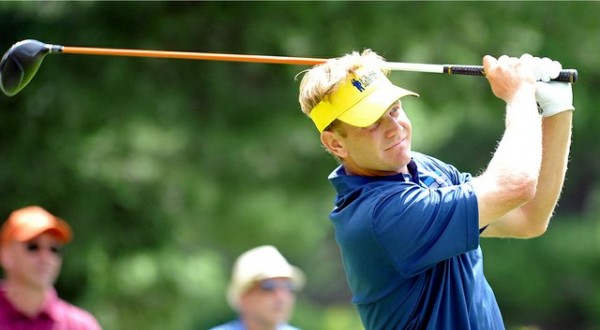

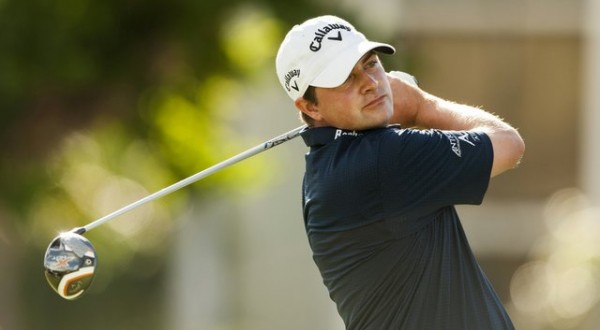

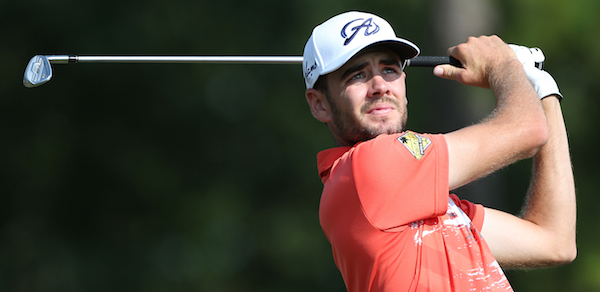
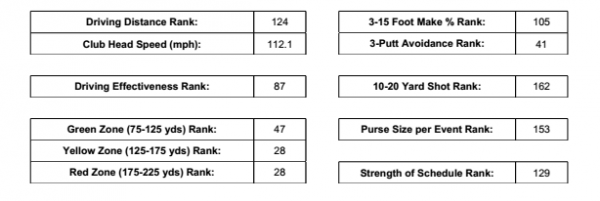
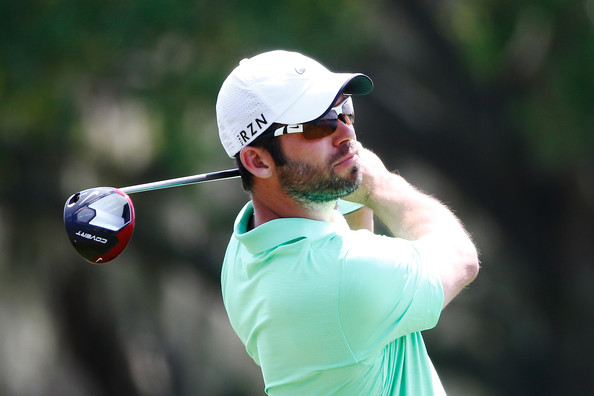

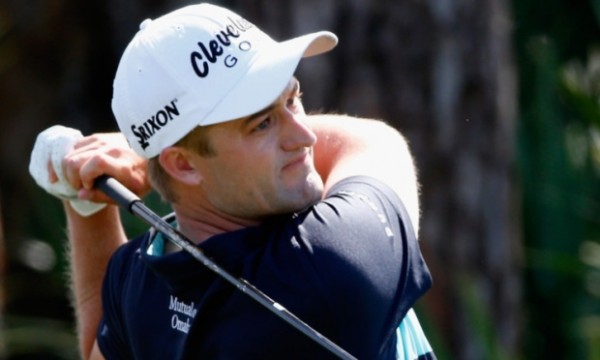
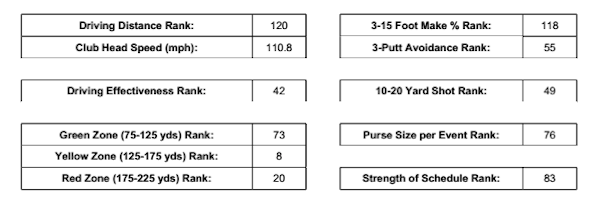
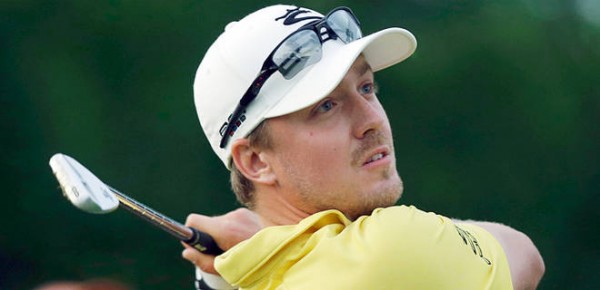

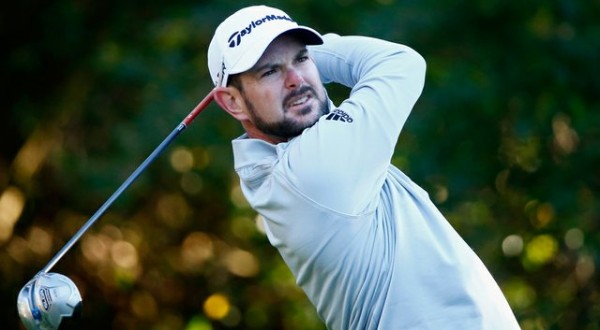
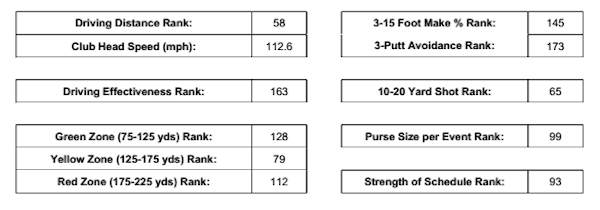
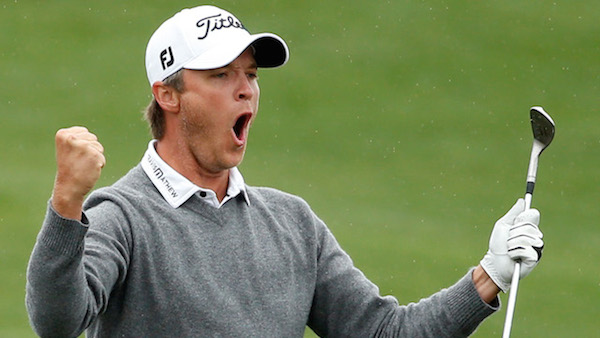

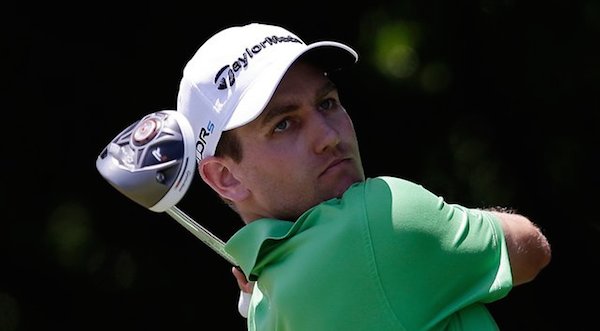
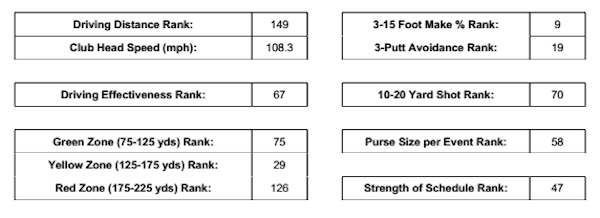
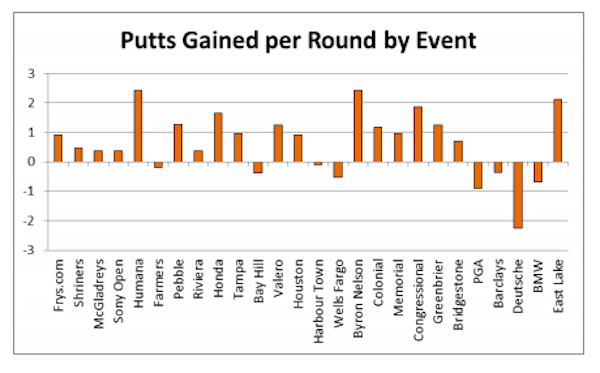
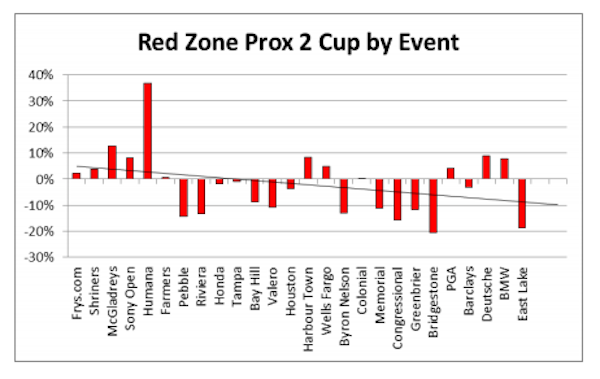
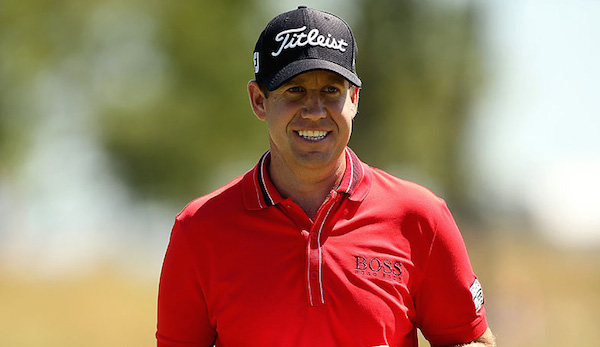
















peaty
Oct 27, 2014 at 2:24 am
Streb was a very good shout. Are you likely to add comments for the other honourable mentions?Thanks
peaty
Oct 12, 2014 at 4:41 pm
Really interesting analysis, enjoyed it. Can I ask are your Driving Effectiveness stats derived from a personal formula or something we could access/calculate say via the pgatour stats. Also re M Jones – what is the best way to analyse their level of iron play off fairway/tee if once again looking at say stats on pgatour? Thanks.
ur mom
Oct 19, 2014 at 5:02 pm
uuuuuuuuuurrrrrrrrrrrrrrmom
Pingback: 10 Players Who Will Rise (or Fall) in 2015 | Golf Gear Select
paul
Oct 8, 2014 at 6:54 pm
I would like to hear about how aim point users see big performance gains after using it for a while…. As I am also considering taking up aim point.
Hellstorm
Oct 8, 2014 at 8:48 pm
I have thought about it too. There was a clinic about an hour from my house in August but I didn’t make it out. I will hit it up next year for sure.
Richie Hunt
Oct 9, 2014 at 10:49 am
Using the Strokes Gained – Putting metric, the majority of AimPoint users that stick with it have seen a big improvement in that metric after using it for 3-12 months. Scott McCarron was the first Tour player to use it and went from being in the top-1/3rd in putting to being in the top-10th percentile. Bo Van Pelt went from being an average to below average putter to ranking 11th in Strokes Gained – Putting after about a year. Daniel Summerhays went from being a below average putter to ranking in the top half after 6 months and then climbing to 9th in Putts Gained after a year of using AimPoint. Those are just a few examples.
RobG
Oct 8, 2014 at 4:56 pm
Driving Effectiveness is the combination of Distance + Percentage of Fairways Hit + Distance to the edge of the fairway, correct? Does this stat apply to when a player hits only driver or does this stat take into account the tee shot (regardless of club selection) on every par 4 and par 5?
Richie Hunt
Oct 8, 2014 at 5:34 pm
It’s on every shot regardless of what they hit off the tee.
nick hanson
Oct 8, 2014 at 2:14 pm
Hey Rich and Golfwrx. I think you did this last year. I’d love to see a comparison of the prior year’s results and where they came out.
Nick
Zak Kozuchowski
Oct 8, 2014 at 2:21 pm
You can read last year’s list here: http://www.golfwrx.com/163945/pga-tour-players-who-will-rise-and-fall-in-2014/
Rich Hunt
Oct 8, 2014 at 2:33 pm
Yes, I did this last year as Zak showed in the link.
Charles Howell finished 45th in earnings while making 24 out of 29 cuts. His driving effectiveness improved to 111th.
Matt Jones got his first victory and John Senden got his first victory on the PGA Tour since 2006.
John Merrick finished 145th on the Money List, Derek Ernst 170th. Mahan’s Adjusted Scoring Average fell to 50th and he didn’t win until the playoffs. I already talked about Blixt and the big miss for me was on Stroud who finished 53rd in earnings and 44th in Adjusted Scoring Average. Josh Teater was the big miss on the players I had improving as he finished 137th in Adjusted Scoring Average.
However, on my board I did have Brian Harman improving and he got his first win and finished and finished 34th in Earnings.
Edub
Oct 8, 2014 at 5:00 pm
Seems like you’re picking the numbers that worked for you last year Rich. I’d say Hunter had a pretty decent year all in all. Predicting an individuals performance a year ahead is a wast of time. The players make the numbers, not the numbers make the player… I know, it’s tough for a statistician to comprehend.
Edub
Oct 8, 2014 at 5:05 pm
Almost forgot… you lead with Colsaerts last year, his 2014 was worse than 2013. Great pick on that one.
Richie Hunt
Oct 8, 2014 at 5:39 pm
I don’t expect to roll 6’s each time. Colsaerts hardly played that much in 2013-2014 because of an injury and I can’t predict injuries.
Teater and Stroud were clear misses which I mentioned before. But hitting on Jones, Senden, Merrick, Blixt and pushing on Howell (who still had a nice year) isn’t bad. I would probably label Hunter Mahan’s performance as a push as well as he did win, but it was one of his weaker seasons in recent memory.